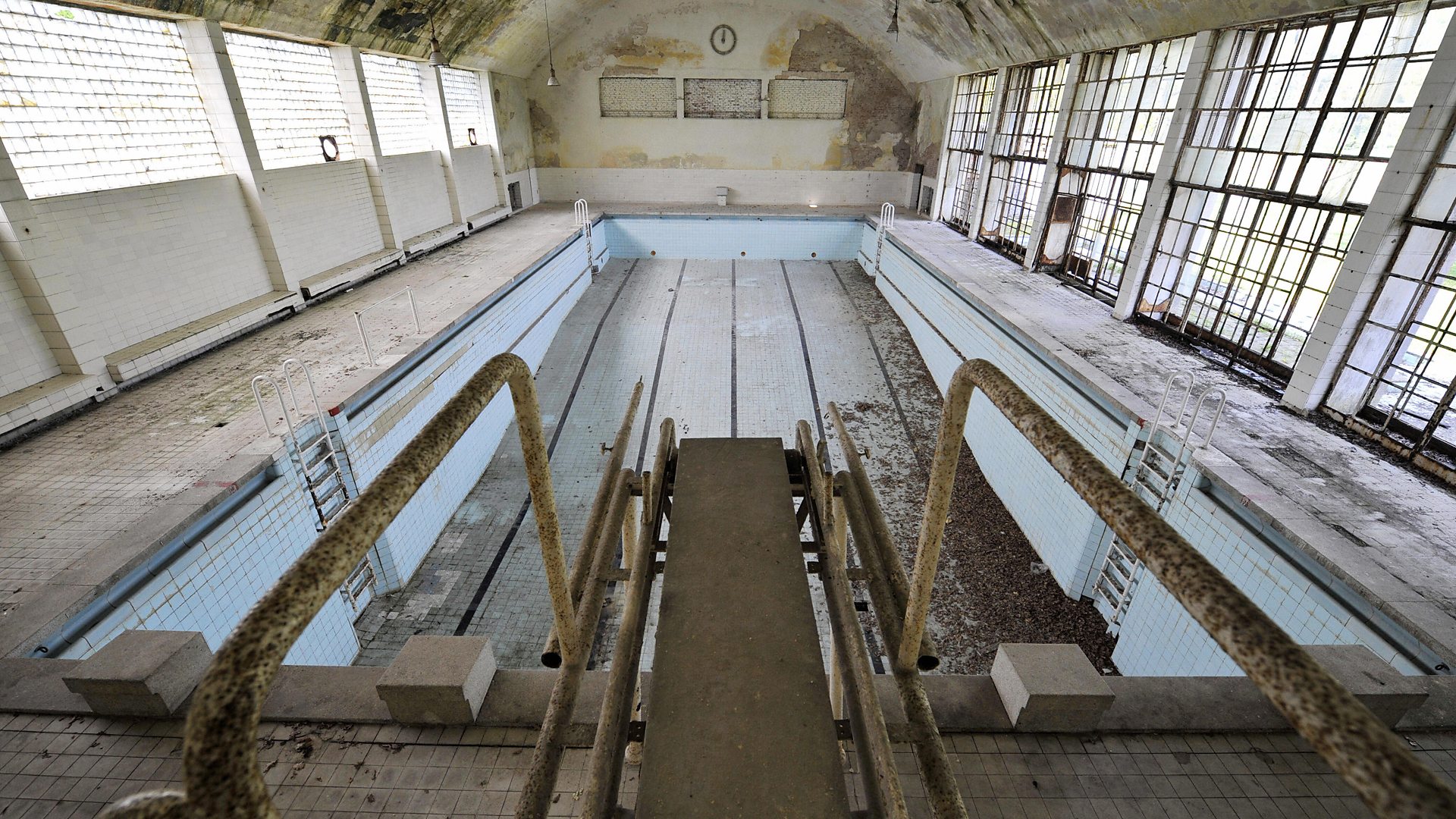These haunting photos of abandoned Olympic sites tell their own stories

- Published
From the remains of Berlin's 1936 Games to Rio 2016, these venues are now sad, spooky, and insightful
The Winter Olympics is almost over. It has been lots of fun. We鈥檝e suffered the heartbreak of Elise Christie鈥檚 crash and disqualification, revelled in the glory of Lizzy Yarnold鈥檚 success in the skeleton, and felt utter bemusement at trying to work out the actual rules of curling.
It won't come as any surprise to Olympics viewers that hosting a Games is costly. The 聽of Pyeongchang has been $12.9 billion.
Often the investment from a Games is used to create an Olympic legacy for the host country, but sometimes sites end up as abandoned ghosts of former tournaments. Here are some of them.
Rio 2016
Construction of facilities for the 2016 Rio Summer Olympics were costly. 聽one estimate, at least $13 billion was spent on building venues for the games.聽
This is the Olympic Park, photographed in March 2017.
Months after the games had finished, these photos were taken of the former Rio Media Centre, which had been constructed to host visiting press.聽
聽This was the Rio Olympic Aquatic Centre, where Britain鈥檚 Adam Peaty famously won gold in the 100m breaststroke.
And here鈥檚 what it looked like nine months after the games.聽
Beijing 2008
The 2008 Olympics in Beijing were a big showpiece, and the opening ceremony was spectacular. The Games 拢28 billion.
They鈥檙e hosting the Winter Olympics in 2022, when the Bird's Nest will be used again.
These photos though, taken in 2016, of fallen Beijing mascots lying prostrate among the overgrowth of a discontinued shopping mall, are absolutely nightmarish.
Here's YingYing.
聽This is Beibei.
And that鈥檚 Nini.
Torino 2006
Athletes walk through the Olympic village in 2006.
Parts of the Olympic village, in 2016, after they were .
Greece 2004
The Summer Olympics of 2004 to have cost Greece $11 billion.
This was the site in 2012.
Here's the German women鈥檚 hockey team celebrating victory in Athens.
By 2011, that playing surface looked like this.
Sarajevo 1984
The Opening Ceremony at the 1984 Winter Olympics in Sarajevo, former Yugoslavia.
This is what one of the ski jumps looked like in 2017. A lot of the facilities from the Sarajevo Olympics were left unusable after the Bosnian war that took place between 1992 and 1995.
Here's Anthony Howard of Team GB competing in the Men鈥檚 Singles Luge event.
聽The bobsled track was used during the war to transport weapons.
This is Senad Omanovic, the luge coach for Bosnia and Herzegovina, earlier this month at the track. He's been trying to raise funds to reconstruct it.
Berlin 1936
The Olympic Village in Berlin, as pictured in 1936. The Village housed athletes for the games, which took place under Nazi rule. Shortly after the Games, parts of the village were used as barracks for the German army.
This is a photo of the site of that village in 2015, where there were plans to restore and rebuild into apartments.
This is the remains of an Olympic swimming pool in Elstal, west of Berlin. After聽1945, it served as barracks for Russian officers, until the Russian army's final withdrawal during the nineties.
* This article was updated on 26 February 2018 to reflect the fact that Lizzy Yarnold competed in skeleton, rather than bobsleigh.
Originally published 23 February 2018.
WANT MORE?
This Winter Olympics friendship is everything
Those banging skeleton helmets and other things we love from the Winter Olympics
These videos of stadium demolitions are strangely satisfying